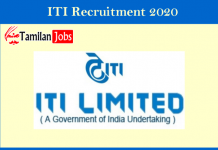
The Income Tax Act of 1961 mandates every taxable person to file their income tax return before the due date. Post submission of the same, the Income Tax Department goes on to verify the accounts and assess the taxability. This process is known as assessment. Assessments are classified into different kinds, which we’ll explore in brief. You can also know more about Income Tax assessment here.
Summary Assessment
This is also known as preliminary assessment, where accounts are verified on a preliminary basis. Any adjustments made post assessment shall be communicated to the assessee, either in written or electronic means. The assessee may respond if he/she feels the need for it. If the assessee hasn’t responded for a period of 30 days, the adjustments will be finalized.
Procedure for Summary Assessment
- After correcting any errors, the tax payable would be calculated on the basis of adjusted income.
- The assessee would be informed of any refundable or payable amount.
- The assessee would also be intimated on certain adjustments, whether or not the same had any effect on the amount of tax to be paid.
- In case of nil adjustments, the assessee would be acknowledged on the receipt of returns filed.
Time Limit for Summary Assessment
The time limit for summary assessment can be a year from the date of filing of returns.
Scrutiny Assessment
Scrutiny assessment is when the taxpayer’s claims, deductions, documents etc, based on the income tax return are verified thoroughly in order to authenticate the same.
Procedure of Scrutiny Assessment
- If the assessing officer feels the need to verify the authenticity of the taxpayer, to clarify whether or not the taxpayer has committed any defaults in terms of manipulation of income stated; computation of excessive laws; or evasion of tax, the taxpayer may need to appear before the officer for the purpose of verification, and is required, submit some documents or evidences relating to the query posed by the assessing officer.
- The assessing officer needs to submit a notice informing the assessee on the details of the assessment, and the notice must be served within a period of 6 months from the end of the financial year in which the assessee has filed his/her returns.
- The taxpayer or his representative need to appear before the assessing officer to answer the necessary queries or produce the relevant documents.
- After determining the tax through the above processes, the taxpayer goes on to specify any amendments on tax payable on the basis of corrections, mistakes etc.
Time Limit for Scrutiny Assessment
The time limit for assessment is 21 months from the end of the assessment year in which the income was assessable. This would apply until the end of the current financial year (2017-18), it would change to 18 months for the financial year 2018-19 and would be 12 months from 2019-20 onwards.
Best Judgement Assessment
A best judgement assessment is conducted when the taxpayer fails to comply with any of the regulations like timely filing of returns, submission of necessary documents etc. These assessments are done by the officer with the help of available knowledge and documents.
Procedure of Assessment
- A show-cause notice will be given to the assessee explaining the need to conduct a best judgement assessment.
- If the officer isn’t satisfied with the arguments or response of the tax payer, he would go on with the best judgement assessment.
- Finally, after giving the assessee an opportunity to hear, the officer will conduct the assessment based on the best of the knowledge and documents available to him, and determine the tax payable based on that.
Income Escaping Assessment
As the name suggests, income-escaping assessment is carried out if the assessing officer feels that any income was being left out from assessment in any assessment year.
Procedure of Assessment
- The taxpayer must be given an opportunity to hear, post which a notice is issued briefing the taxpayer on the assessment to be conducted and its need.
- The assessing officer will then go on to compute the incomes which he feels escaped assessment. He may also re-compute the loss or depreciation allowance or the likes of it, for the particular assessment year.
- The taxpayer would be notified on the results computed and the implications thereto.
Time Limit for Income Escaping Assessment
Income escaping assessment must be completed within a period of 9 months from the end of the financial year from which the notice of invoice was served. This is for notices served before the financial year 2019-20, post which the time for completing the same would be 12 months.
Time Limit for Issue of Notice for Income Escaping Assessment
A notice indicating the conduction of an assessment can given to the concerned assessee within a period of 4 years from the end of the relevant assessment year, and 6 years in case the value escaped is more than 1,00,000 rupees. On the other hand, if the escaped income is related to a particular asset located out of the Indian frontiers, a period of 16 years can be allowed.






























